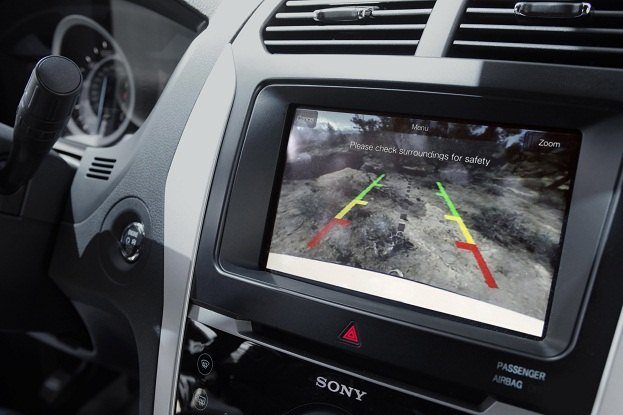Over the past 30 years, air bags, anti-lock brakes and now electronic stability control are some automotive safety technology that have increased the occupants’ survivability in medium to high-speed collisions. While safety improved inside motor vehicles, elements of progress is believed to be contributing danger for unshielded pedestrians. A critical area cited by the United States’ National Highway and Traffic Safety Administration (NHTSA) is tragic injuries or deaths resulting in vehicle back-up accidents. According to the NHTSA, there is a yearly average of 292 deaths and 18,000 serious injuries attributed to reversing vehicles.
Based on the escalation of taller vehicle classes (minivan, sport utility vehicles), new car design is also thought to be putting children, pets and the elderly at greater serious risk behind an automobile in reverse motion. In order to achieve the heavy demands of aerodynamic and structural shapes for new cars, higher deck lids as well as the larger rear roof pillars migrated into modern vehicle design. In order to combat what is said to be a measure to eliminate blind spots, the NHTSA is proposing the mandate for back-up or rear-view cameras to be installed in all new vehicles by 2014.
This initiate is linked to a piece of legislation called the Cameron Gulbransen Kids Transportation Safety Act of 2007. Passed by the U.S. government in 2008 with Senate and House bipartisanship, the name connected to the Act was a two-year old will died when the family SUV driven by his father backed over him in 2002. Setting out objectives including reversible power windows and improvements in rear vision, the NHTSA suggests rear camera technology is the best solution for fulfilling the latter standard. Under a proposal (which is presently in a 60-day consolation period) 10% of new vehicles built by September of 2012 must feature a rear view camera with 100% of cars and trucks sold in the United States required to comply with added technology two years later.
While lives are truly valuable enough to make an investment in technology a worthwhile investment, the cost of this standard equipment would concern garner some displeasure from new car buyers. A feature which will be added onto a vehicle’s base price, these back-up camera systems routinely start as an over $400 option. The automotive aftermarket companies have been selling add-on units for less than half the OEM’s price with some costing below $100.
Still only a proposal by the NHTSA, the aggressive measure to mandate rear-view cameras in all 2014 model year vehicles has prompted a commitment from one automaker to be announced. Ford Motor Company has pledged that all of their products will available in almost their entire lineup by the end of the 2011 calender year.
This latest announcement from the NHTSA comes as another electronic safety requirement is soon to spread across the American automotive marketplace. Introduced in 2007 and passed, electronic stability control systems are required on all automobiles by the 2012 model year.
Information Source: National Highway and Traffic Safety Administration
Photo Source: Ford Motor Company


